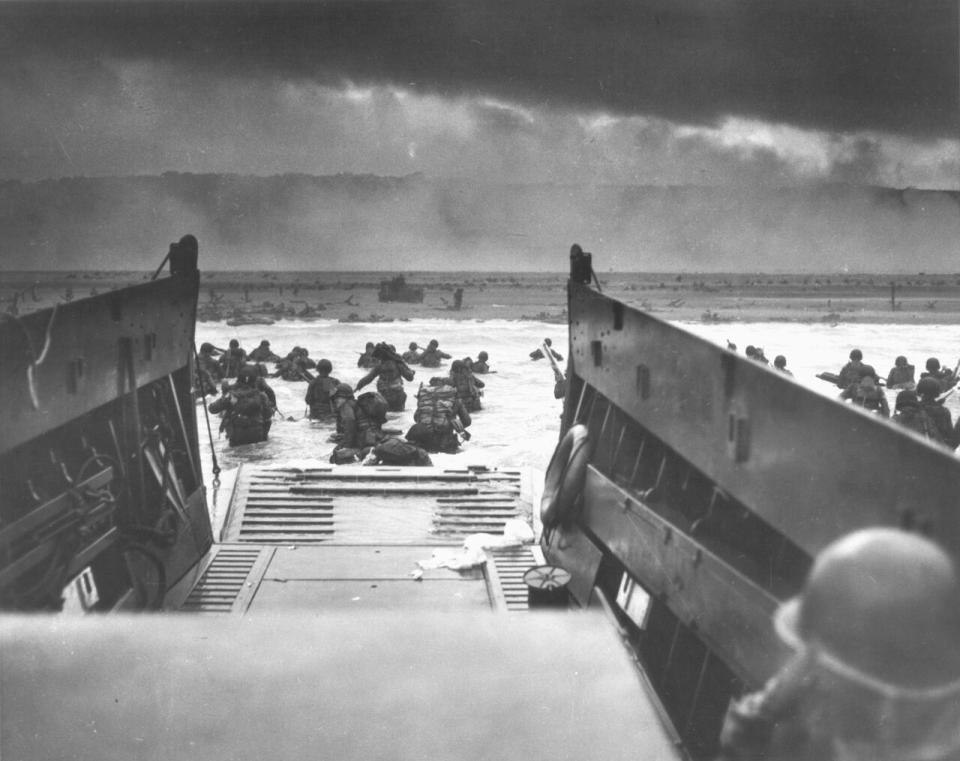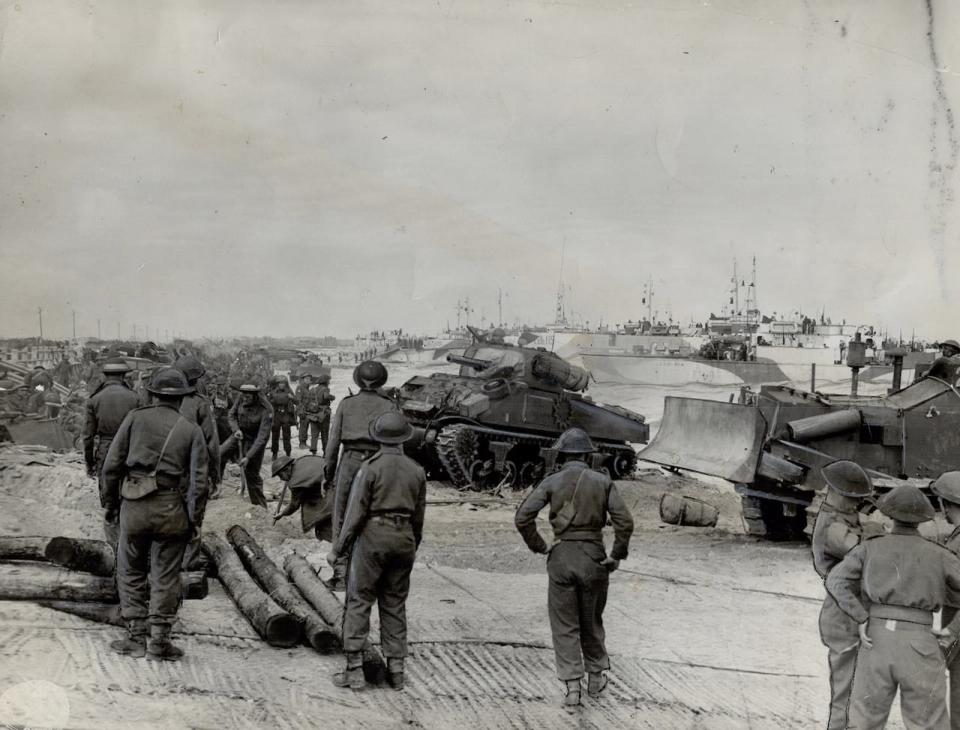'The Saints were with us': B.C. veteran recalls D-Day experience

June 6, 1944. Richard Norris, a bright-eyed 17-year-old fisherman reservist from Quadra Island, B.C., is aboard one of the first landing crafts to reach Juno Beach.
"The whole world was thumping and bumping," he remembers during an interview with CBC's Daybreak South host Chris Walker.
"You could hear the gunfire. We knew what we were getting into."
Norris was one of thousands of Canadians who fought at D-Day, the beginning of the Battle of Normandy and the subsequent liberation of France.
Eighty years later, Norris was asked to lower the flag at the Cenotaph in Summerland, B.C., which he now calls home, to honour the legacy left by those who fought on D-Day.
Norris was born in Regina, SK, but his family moved to B.C. early on. He was one of 10 children in his family.
His father had fought in the First World War, and he and his three older brothers fought in the second.
"Mother thought the Norris family was well represented in the military."
'We were all expendable'
On D-Day, Norris was the lead man trailing a floating guide rope, which the embarking soldiers used to guide them from ship to shore. His job was to help land troops and equipment "faster than the Germans could respond." Norris said each landing craft only had one shot at disembarking troops onto the beach.
All the while, "round the clock" bombers flew their missions overhead.
"We were all expendable," Norris said.
"Some [ships] were damaged, sunk, burned out and abandoned; the beach was littered with wrecks."

Troops arrive at Juno Beach on June 6, 1944. (Robert F. Sargent)
About 155,000 soldiers, 5,000 ships and landing craft, 50,000 vehicles and 11,000 planes were set for battle.
Around 14,000 Canadian soldiers were to land on the beaches, while another 450 were to drop behind enemy lines by parachute or glider.
The Royal Canadian Navy supplied ships and about 10,000 sailors. Lancaster bombers and Spitfire fighters from the Royal Canadian Air Force supported the invasion.
Norris said the entire channel was moving, and he could hear the thumping and rattling of engines and ships.

About 14,000 Canadian soldiers took park in the invasion of Normandy. (Toronto Library Archvies)
He can't recall how many of the men aboard his landing craft returned home.
Three-hundred and fifty-nine Canadians were killed on D-Day.
"Everything was so fast and so furious. It's pretty hard to put it all together," he said.
After the war
Upon returning home, he suffered from posttraumatic stress.
"I was tough then," he said. "Tough because you're used to giving orders and taking orders. Now, all of a sudden, you're looking for work."
In 1946, he met his wife, Kathleen, and the pair went on to have six children, 13 grandchildren and 24 great-grandchildren.
Norris returned to Juno Beach in 1999.
"Standing among the thousands of headstones, I was moved to angry tears and guilt because of the crushing loss," he said.
On this day, Norris hopes people remember "the gamble" that the D-Day mission was.
"The Germans had seven years to fortify the French coast. It was a big gamble," he said.
"Boy, I'll tell you, we were lucky. The Saints were with us."
LISTEN | Richard Norris remembers the fury of Juno Beach:


